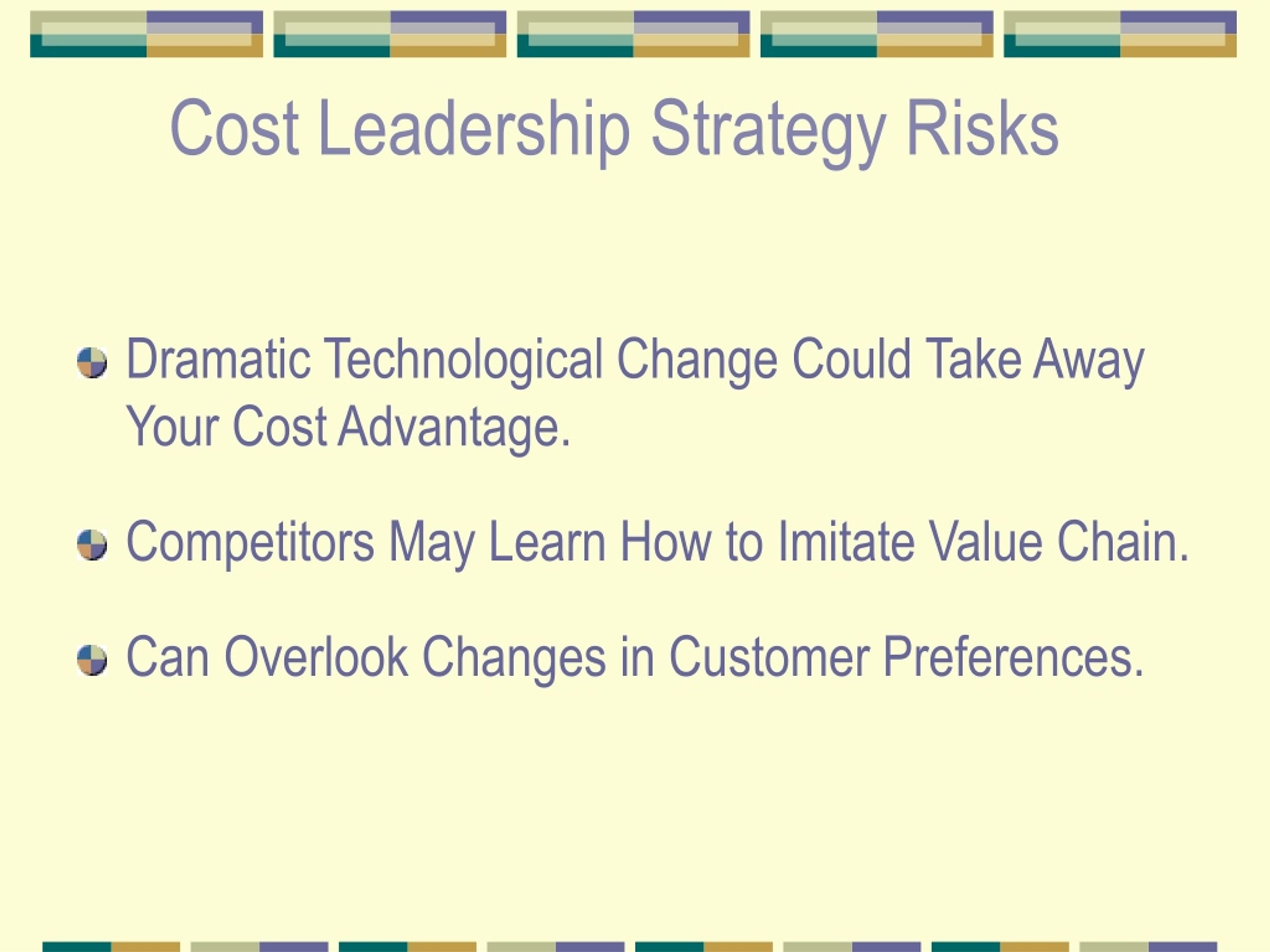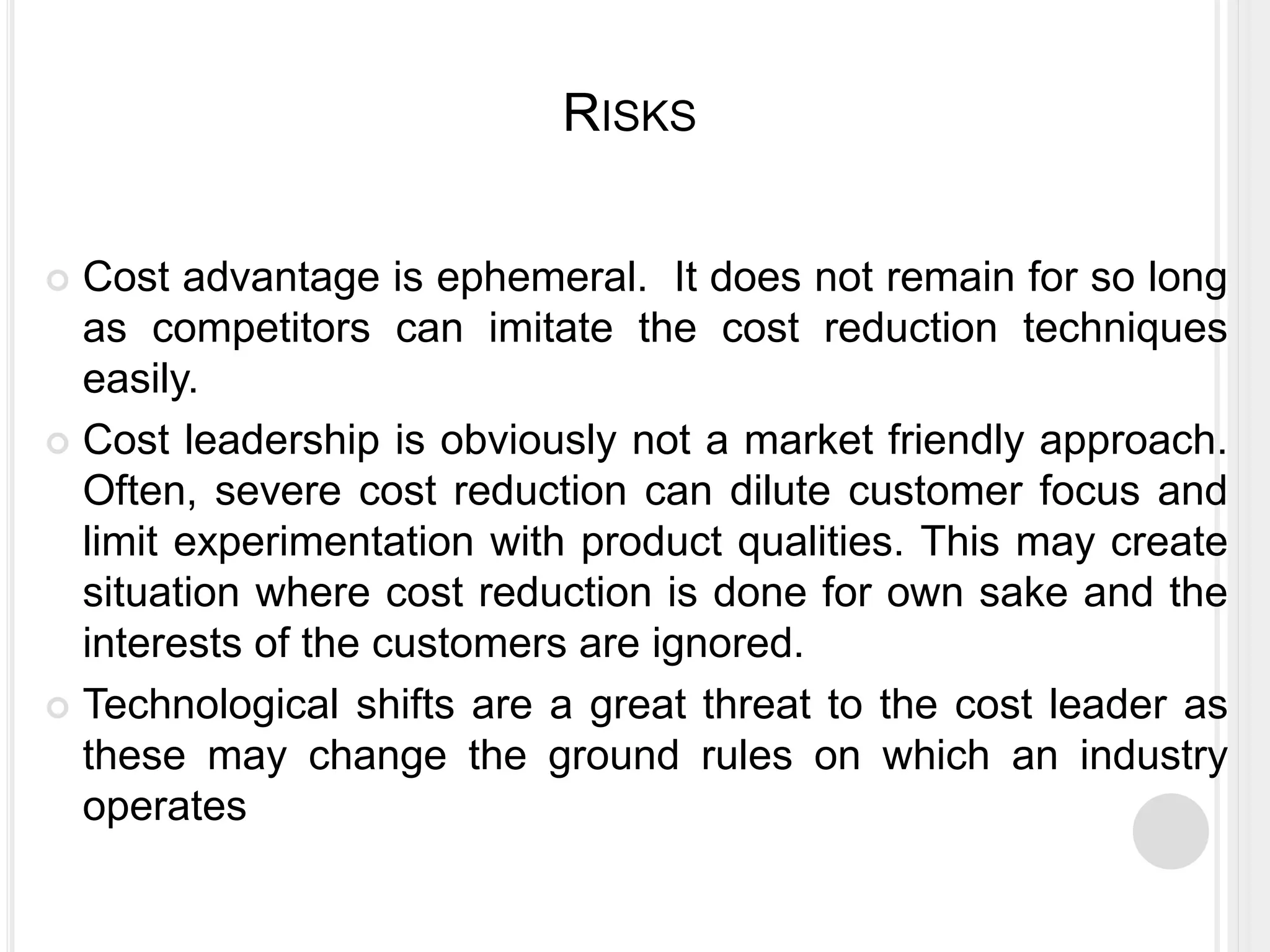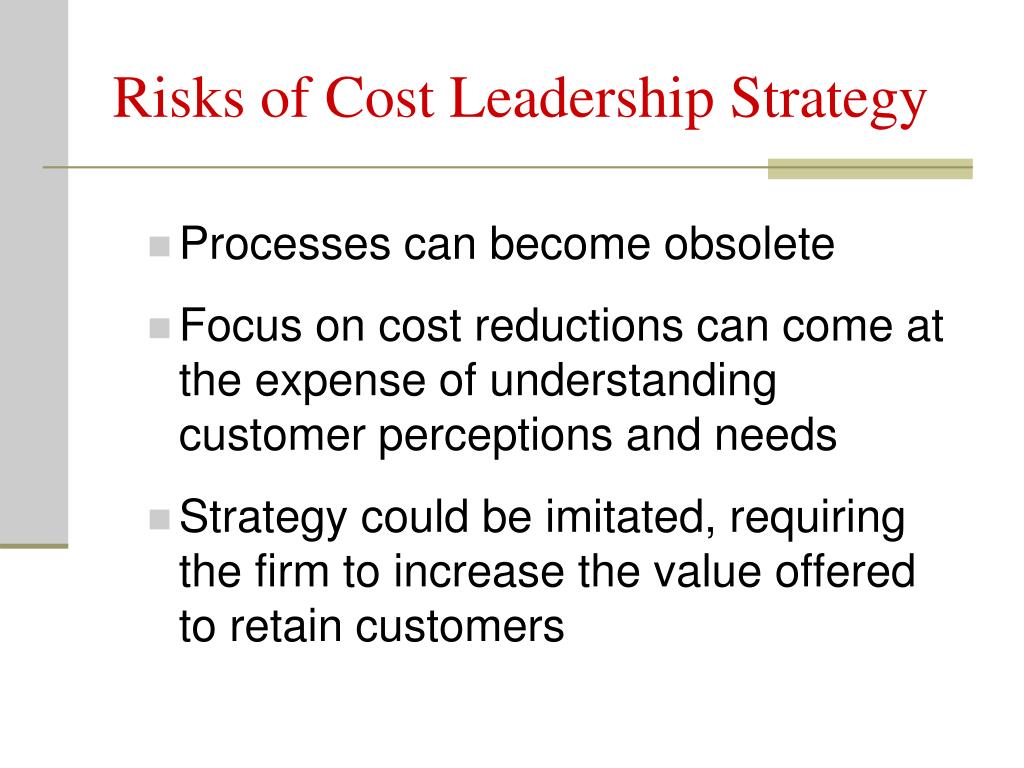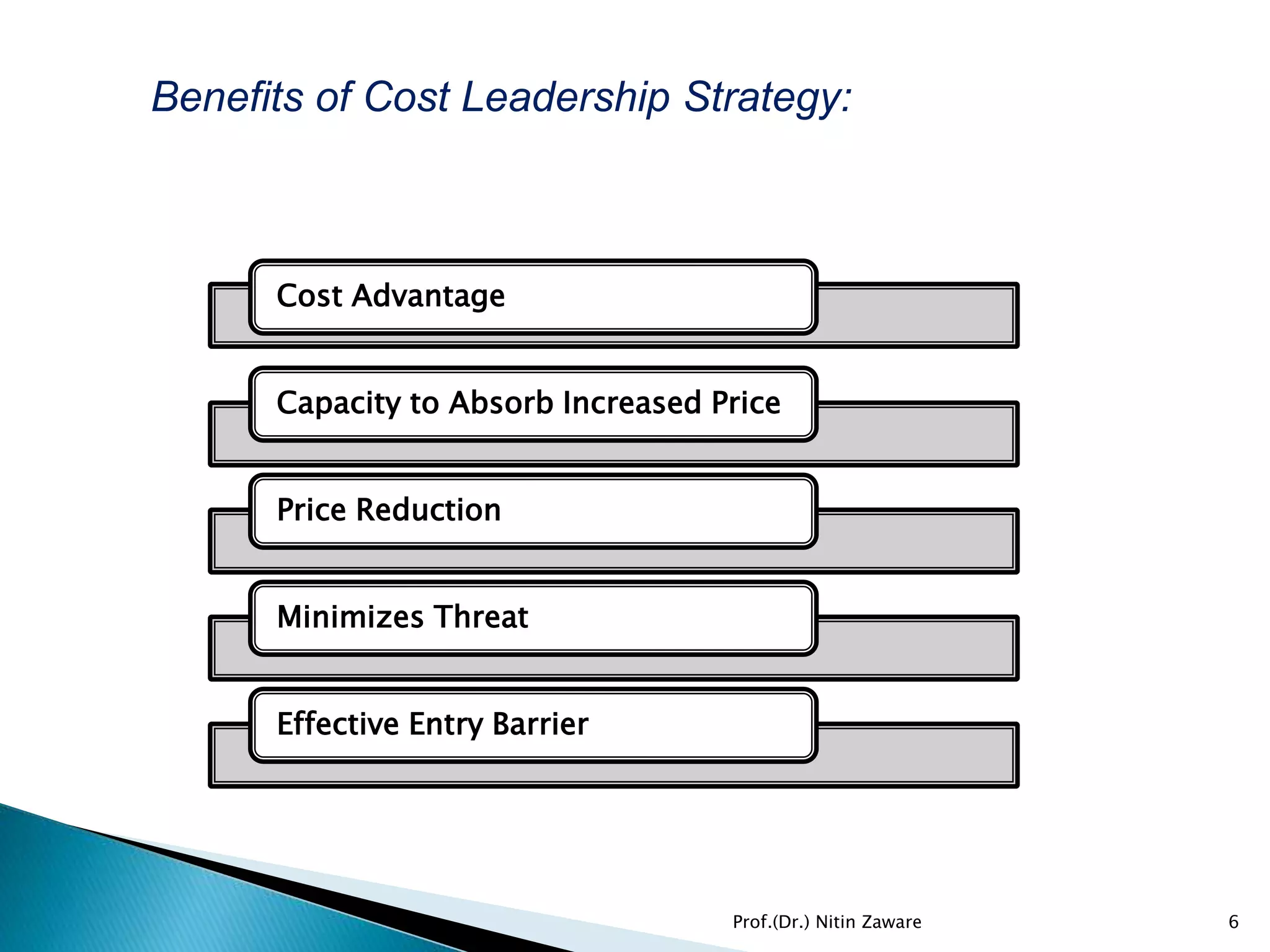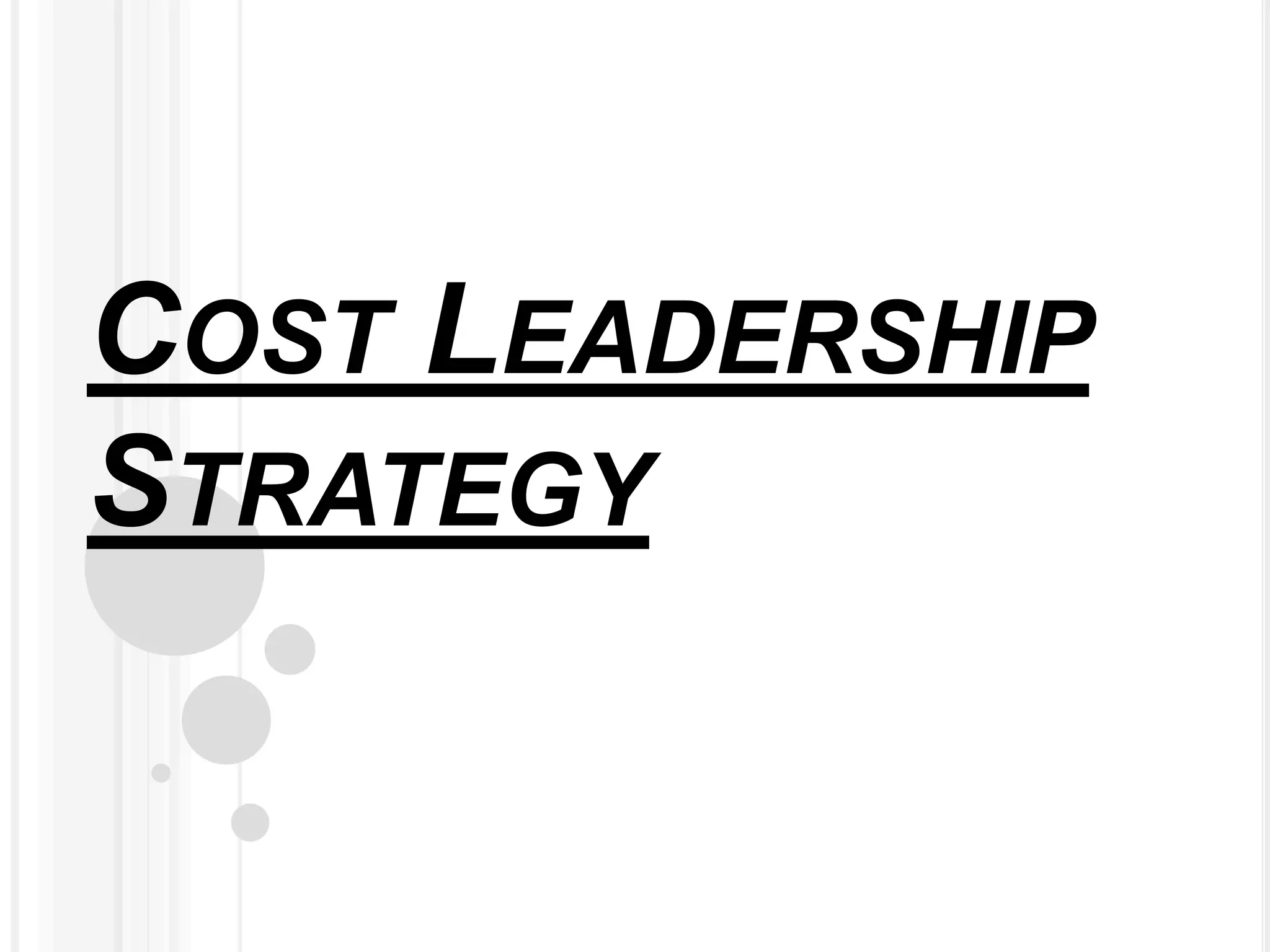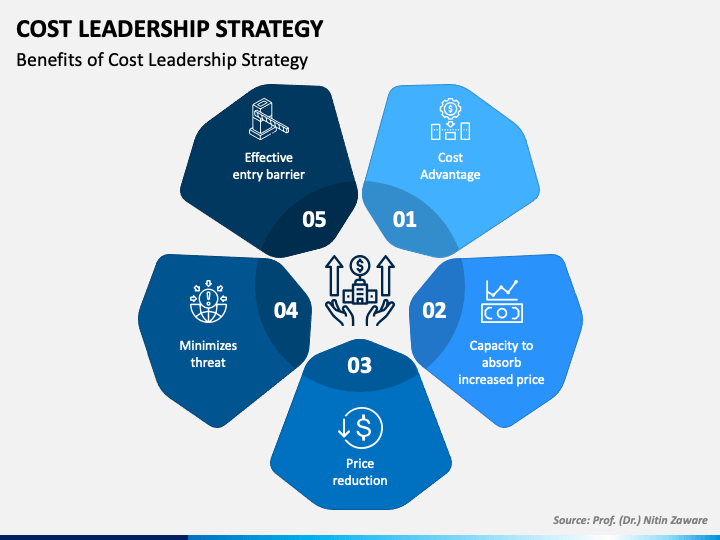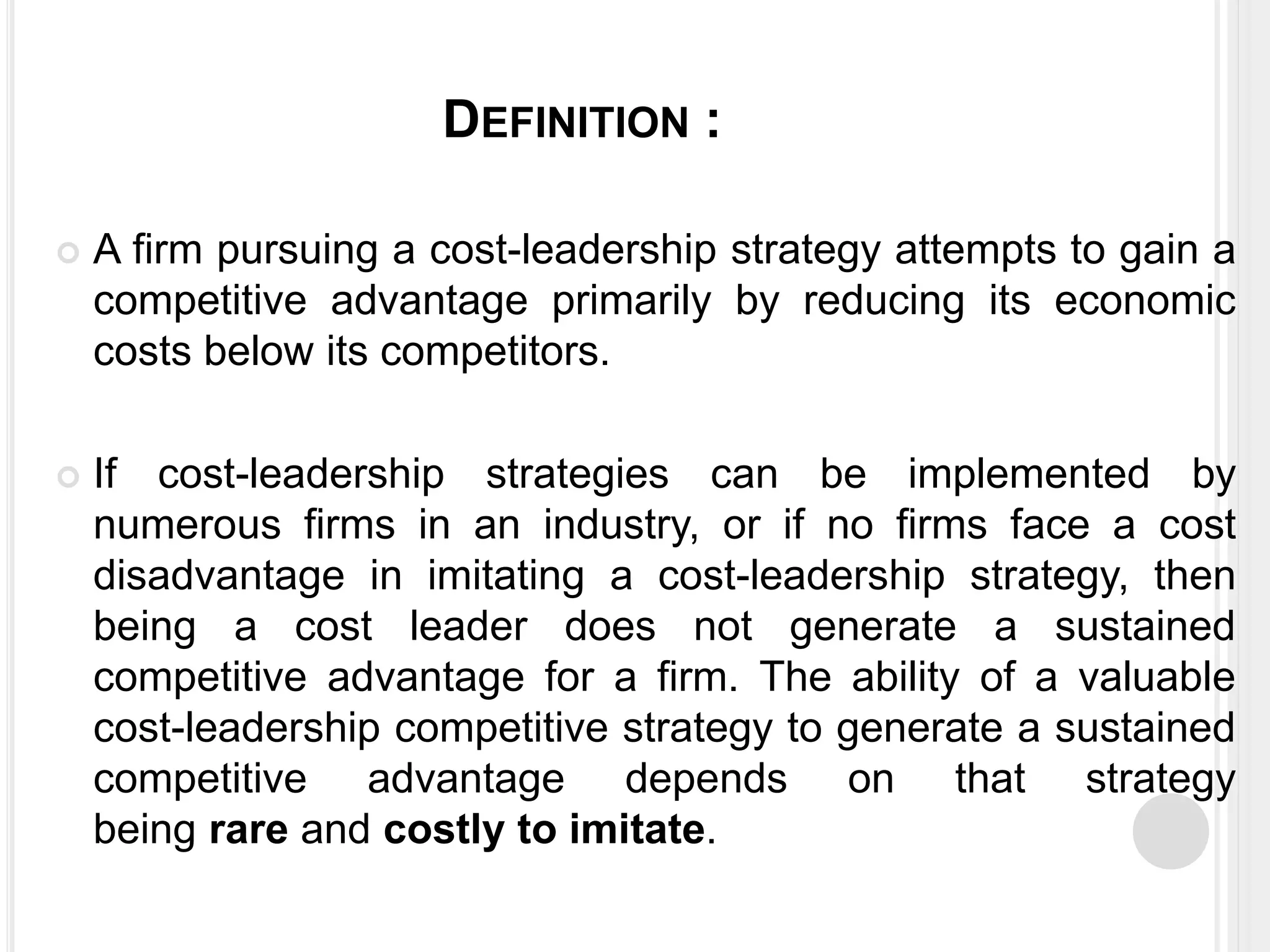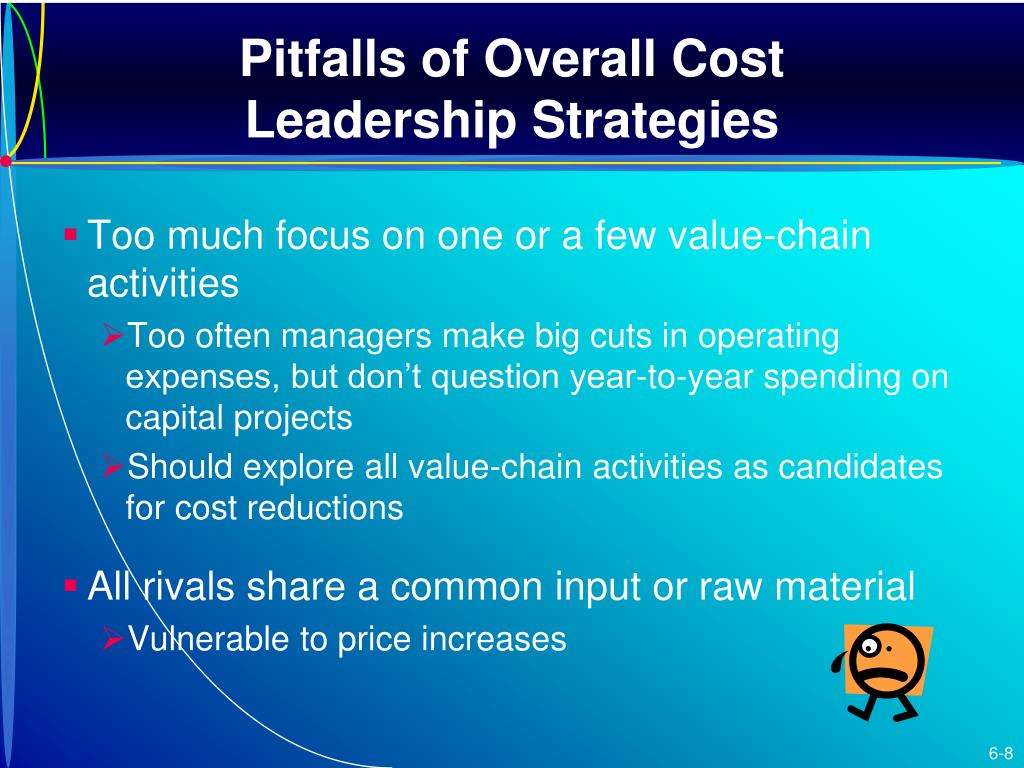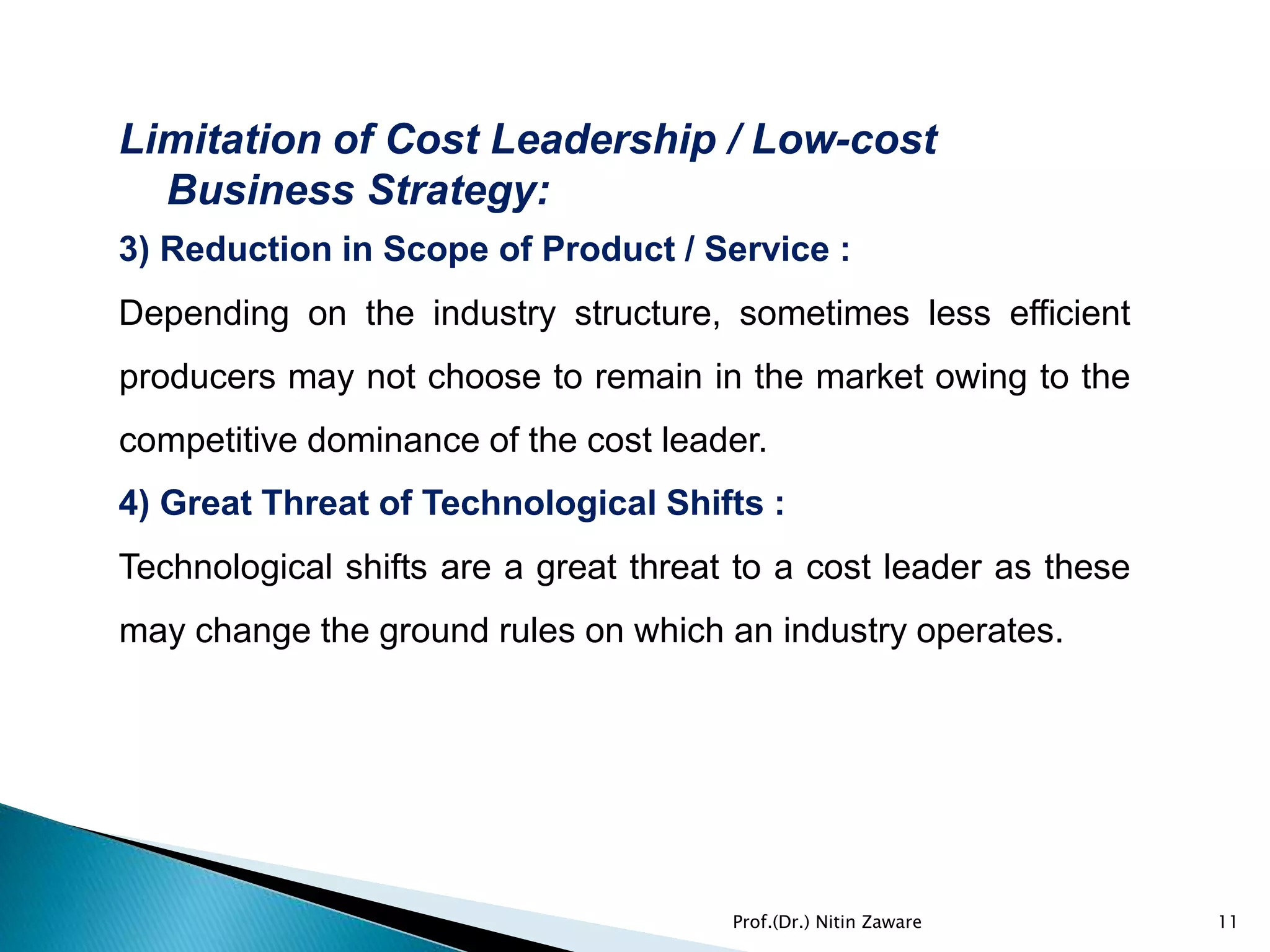The Typical Risks Of A Cost Leadership Strategy Include
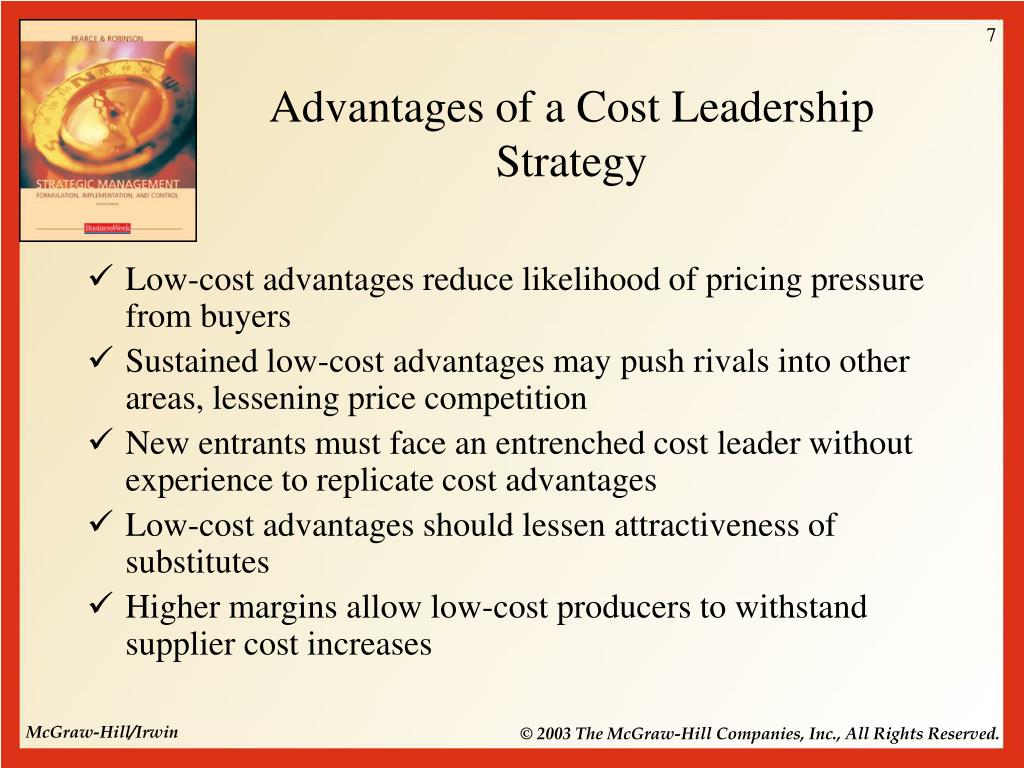
Companies pursuing a cost leadership strategy, aiming to be the lowest-cost producer in their industry, face a gauntlet of potential pitfalls. This approach, while promising market dominance, carries inherent risks that can undermine profitability and long-term viability.
The core danger lies in several key areas: technological disruption, imitation by competitors, changes in consumer preferences, and overreliance on cost reduction at the expense of quality or innovation.
The Lure and the Liability
Cost leadership, at its heart, is about efficiency. Companies like Walmart and McDonald's have famously leveraged economies of scale and streamlined processes to offer products and services at rock-bottom prices.
However, this strategy is not foolproof. The relentless pursuit of lower costs can leave businesses vulnerable to unexpected challenges.
Technological Disruption: A Swift Undercut
New technologies can quickly render existing processes obsolete. Competitors adopting these innovations can achieve even lower costs, eroding the cost leader's advantage.
For example, the rise of cloud computing has allowed smaller companies to access IT infrastructure at a fraction of the cost previously required, challenging established players who invested heavily in traditional data centers.
Imitation: The Race to the Bottom
Successful cost leadership strategies inevitably attract imitators. Competitors analyze and replicate the cost leader's methods, leading to price wars and diminished profit margins for everyone.
The airline industry provides a prime example. The "no-frills" model pioneered by Ryanair and Southwest Airlines has been widely copied, intensifying competition and squeezing profits across the board.
Changing Consumer Preferences: The Price of Apathy
Consumers' tastes are fickle. A relentless focus on cost reduction can lead to a neglect of quality, features, or customer service, driving customers away if their preferences shift.
A 2023 study by Deloitte found that 68% of consumers are willing to pay more for a product or service if it offers superior quality or a better customer experience. Companies solely focused on cost may miss this crucial shift.
Overreliance on Cost Reduction: Cutting Too Deep
An obsessive focus on cost can lead to short-sighted decisions. Businesses may cut corners on research and development, employee training, or supplier relationships, ultimately harming their long-term competitiveness.
PwC's 2024 Global Innovation Survey revealed that companies prioritizing cost reduction often underperform in innovation compared to those that invest strategically in R&D. This creates a vicious cycle of declining competitiveness.
Supply Chain Vulnerabilities
Cost leaders often rely on lean supply chains to minimize inventory costs. However, these supply chains can be vulnerable to disruptions like natural disasters, geopolitical instability, or supplier bankruptcies.
The COVID-19 pandemic exposed the fragility of global supply chains, leaving many cost leaders scrambling to secure supplies and meet customer demand, highlighting the risks of single-source procurement.
Data and Examples
Recent research from the Harvard Business Review indicates that only 30% of companies pursuing a cost leadership strategy achieve sustained competitive advantage.
This statistic underscores the difficulty of maintaining a cost advantage in the face of relentless competition and disruptive technologies.
The downfall of Kmart, once a major discount retailer, illustrates the perils of failing to adapt to changing consumer preferences and competitive pressures. Despite its initial cost leadership, Kmart lost ground to Walmart and other rivals by neglecting store modernization and customer service.
The Road Ahead
Companies pursuing cost leadership must remain vigilant and adaptable. Continuous monitoring of technological trends, consumer preferences, and competitive dynamics is crucial.
Investing in research and development, building resilient supply chains, and maintaining a focus on quality are essential for mitigating the risks associated with this strategy.
The challenge lies in balancing the pursuit of efficiency with the need for innovation and customer satisfaction. This careful equilibrium is key to long-term success in a rapidly evolving business landscape. Next steps include conducting regular risk assessments and diversifying supply chains to ensure business continuity.


